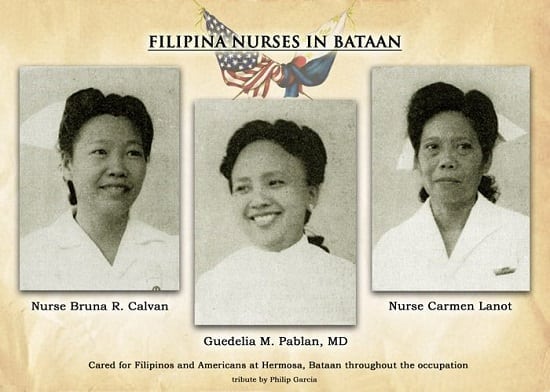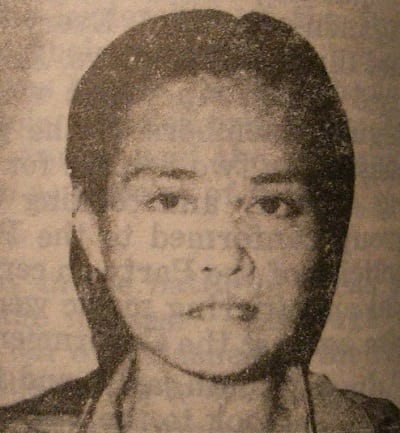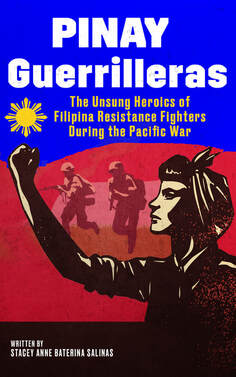- Home
- Stories
-
Internship
- Summer 2024 Internship
- Summer 2023 Internship
- Fall 2022 Internship
- Summer 2022 Internship
- Summer 2021 Internship
- Fall 2020- Spring 2021 Internship
- Summer 2020 Internship
- Fall 2019 Internship
- Summer 2019 Internship >
- School Year 2018-2019 Internship
- Summer 2018 Internship >
- Fall 2017 Internship
- Summer 2017 Internship >
- Books
- Archives
-
Resource Page
-
Supplementary Research Guides
>
- Unit 731 - Guide >
-
Philippines' Resistance - Guide
>
- Philippines World War II Timeline
- The Japanese Invasion & Conquest of the Philippines
- Bataan Death March
- Formation of Underground Philippines Resistance
- Supplies of the Guerrilla Fighters
- The Hukbalahap
- Hunter's ROTC
- Marking's Guerrillas
- United States Army Forces in the Philippines of Northern Luzon (USAFIP-NL)
- The Aetas
- Chinese and Filipino-Chinese Nationalist Guerrilla Units
- The Female Faces of the Philippine Guerrillas
- Rising Sun Flag - Guide >
- Pinay Guerrilleras - Guide >
- Fall of Singapore - Guide >
- Three Years and Eight Months - Guide >
- Siamese Sovereignty - Guide >
- The Khabarovsk War Crimes Trial - Guide >
- Unit 731 Cover-up : The Operation Paperclip of the East - Guide >
- Marutas of Unit 731 - Guide >
- Prince Konoe Memoir - Guide >
- Competing Empires in Burma - Guide >
- Battle of Shanghai - Guide >
- Ishi Shiro - Guide >
- Taiwan The Israel of the East - Guide >
- Seeking Justice for Biological Warfare Victims of Unit 731 - Guide >
- Rice and Revolution - Guide >
- Clash of Empires - Guide >
-
Hunger for Power and Self-SufficiencyI - Guide
>
- The Influence of War Rations on Post-War Culinary Transformations
- How World War II Complicated Food Scarcity and Invention
- American Military Innovations
- Government-Sponsored Food Inventions in Europe during World War II
- Feeding the Army: The Adaptation of Japanese Military Cuisine and Its Impact on the Philippines
- Mixed Dishes: Culinary Innovations Driven by Necessity and Food Scarcity
-
Denial A Quick Look of History of Comfort Women and Present Days’ Complication - Guide
>
- The Comfort Women System and the Fight for Recognition
- The Role of Activism and International Pressure
- The Controversy over Japanese History Textbooks
- The Sonyŏsang Statue and the Symbolism of Public Memorials
- Activism and Support from Japanese Citizens
- The Future of Comfort Women Memorials and Education
- Echoes of Empire: The Power of Japanese Propaganda - Guide >
- Lesson Plans >
-
Supplementary Research Guides
>
Underground Resistance during the Japanese Occupation
The Japanese occupation of the Philippines lasted for over two years. While the Allies reconvened and fought their way across the Pacific, the Philippine peoples began a ferocious underground resistance movement. Japanese brutality, combined with a lack of food and medical supplies, meant that the underground resistance required all available hands and voices to lend themselves to the cause of liberating the Philippines. Guerilla fighters ambushed Japanese patrols, sabotaged weapon production efforts in local factories, and secretly gave information to U.S. forces via radio and off-the-coast meetings. The resistance movement prevented the Imperial Japanese Army from establishing total control over the islands by disrupting their lines of communication, pushing back their forces into more open and vulnerable terrain, and pilfering their warehouses of ammunition and supplies.
Women, who were especially vulnerable to the Japanese occupiers, risked their safety to support the resistance. Local women were kidnapped and turned into sex laborers, forced to serve the imperial army as “comfort women.” Filipina women faced the combined threats of rape, kidnap, torture, and murder. And yet, Pinay guerrilleras forged ahead despite these insurmountable odds.
The Filipina Led Medical Unit of Bataan
Filipina nurses, Bruna R. Calvan, and Carmen Lanot, and Pinay doctor, Guedelia M. Pablan. These Bataan medical professionals saw firsthand the grim and cruel treatment of both American and Filipino soldiers during the Death March. The three continued to stay in Bataan, even after the Japanese defeated MacArthur and secured the Philippines, in order to continue to heal and protect wounded civilians and soldiers in hiding. They did this despite the ongoing threat of Japanese military violence. After their hospital was burned down by Japanese troops, they moved to a convent to continue their work. That convent was also destroyed, causing the Filipina led medical crew to make their own makeshift health center by nearby fishing ponds, where they continued to aide in the recovery of malaria afflicted guerrilla troops by forging paperwork for more orders of quinine, which they sent to afflicted soldiers in the mountain camps via canoe across Manila Bay.
Celia Mariano Pomeroy
Celia Mariano Pomeroy was a guerrillera resistance fighter during the Pacific War, whose liaison and courier work was central to the resistance. Among her other self-assigned guerrillera duties, Pomeroy inspired and instructed local villagers and guerrillas, showing them how to organize and network while simultaneously rallying villages with rhetoric emphasizing liberation and democracy. She later became the editor of a resistance newspaper, Katubusan ng Bayan, or Redemption of the Nation. She also was made the educational secretary of the central Luzon Bureau. Pomeroy would come into frequent contact with the Japanese as she traveled between villages. She survived numerous ambushes and attacks while under close Japanese surveillance and was deemed a priority target by Japanese soldiers tasked with ferreting out Filipino guerrillas. With her close relations and networking with local villagers, Pomeroy was able to remain safe and concealed on her missions from the IJA (Imperial Japanese Army).
|
Pinay Guerrilleras: The Unsung Heroics of Filipina Resistance Fighters During the Pacific War
December 8th, 1941 marked the start of the full-scale invasion of the Philippines. With the surrender of the Bataan Peninsula and the fortified island Corregidor in the Spring of 1942, all hope seemed lost. But, almost overnight, the Philippine underground resistance began to take shape. Units made up of guerrilla volunteers from all walks of life participated in the liberation of the Philippines. The women guerrillas of the resistance, or guerrilleras, are one such group who have received less attention in Pacific Theater histories. The names and faces of those Filipina guerrilla soldiers, who led their own units, conducted espionage, nursed the wounded, led raids, or raised armies, have nearly been forgotten. The rigid gender barriers guerrilleras faced both on and off the field of duty resulted in their stories being silenced or relegated to less commanding roles in the aftermath of the war. This book attempts to bring these stories to light so that the legacy of these unsung Filipina resistance fighters lives on.
|
|
Pacific Atrocities Education
730 Commercial Street San Francisco, CA 94108 415-988-9889 |
Copyright © 2021 Pacific Atrocities Education.
We are a registered 501 (c)(3) charity. |
- Home
- Stories
-
Internship
- Summer 2024 Internship
- Summer 2023 Internship
- Fall 2022 Internship
- Summer 2022 Internship
- Summer 2021 Internship
- Fall 2020- Spring 2021 Internship
- Summer 2020 Internship
- Fall 2019 Internship
- Summer 2019 Internship >
- School Year 2018-2019 Internship
- Summer 2018 Internship >
- Fall 2017 Internship
- Summer 2017 Internship >
- Books
- Archives
-
Resource Page
-
Supplementary Research Guides
>
- Unit 731 - Guide >
-
Philippines' Resistance - Guide
>
- Philippines World War II Timeline
- The Japanese Invasion & Conquest of the Philippines
- Bataan Death March
- Formation of Underground Philippines Resistance
- Supplies of the Guerrilla Fighters
- The Hukbalahap
- Hunter's ROTC
- Marking's Guerrillas
- United States Army Forces in the Philippines of Northern Luzon (USAFIP-NL)
- The Aetas
- Chinese and Filipino-Chinese Nationalist Guerrilla Units
- The Female Faces of the Philippine Guerrillas
- Rising Sun Flag - Guide >
- Pinay Guerrilleras - Guide >
- Fall of Singapore - Guide >
- Three Years and Eight Months - Guide >
- Siamese Sovereignty - Guide >
- The Khabarovsk War Crimes Trial - Guide >
- Unit 731 Cover-up : The Operation Paperclip of the East - Guide >
- Marutas of Unit 731 - Guide >
- Prince Konoe Memoir - Guide >
- Competing Empires in Burma - Guide >
- Battle of Shanghai - Guide >
- Ishi Shiro - Guide >
- Taiwan The Israel of the East - Guide >
- Seeking Justice for Biological Warfare Victims of Unit 731 - Guide >
- Rice and Revolution - Guide >
- Clash of Empires - Guide >
-
Hunger for Power and Self-SufficiencyI - Guide
>
- The Influence of War Rations on Post-War Culinary Transformations
- How World War II Complicated Food Scarcity and Invention
- American Military Innovations
- Government-Sponsored Food Inventions in Europe during World War II
- Feeding the Army: The Adaptation of Japanese Military Cuisine and Its Impact on the Philippines
- Mixed Dishes: Culinary Innovations Driven by Necessity and Food Scarcity
-
Denial A Quick Look of History of Comfort Women and Present Days’ Complication - Guide
>
- The Comfort Women System and the Fight for Recognition
- The Role of Activism and International Pressure
- The Controversy over Japanese History Textbooks
- The Sonyŏsang Statue and the Symbolism of Public Memorials
- Activism and Support from Japanese Citizens
- The Future of Comfort Women Memorials and Education
- Echoes of Empire: The Power of Japanese Propaganda - Guide >
- Lesson Plans >
-
Supplementary Research Guides
>


